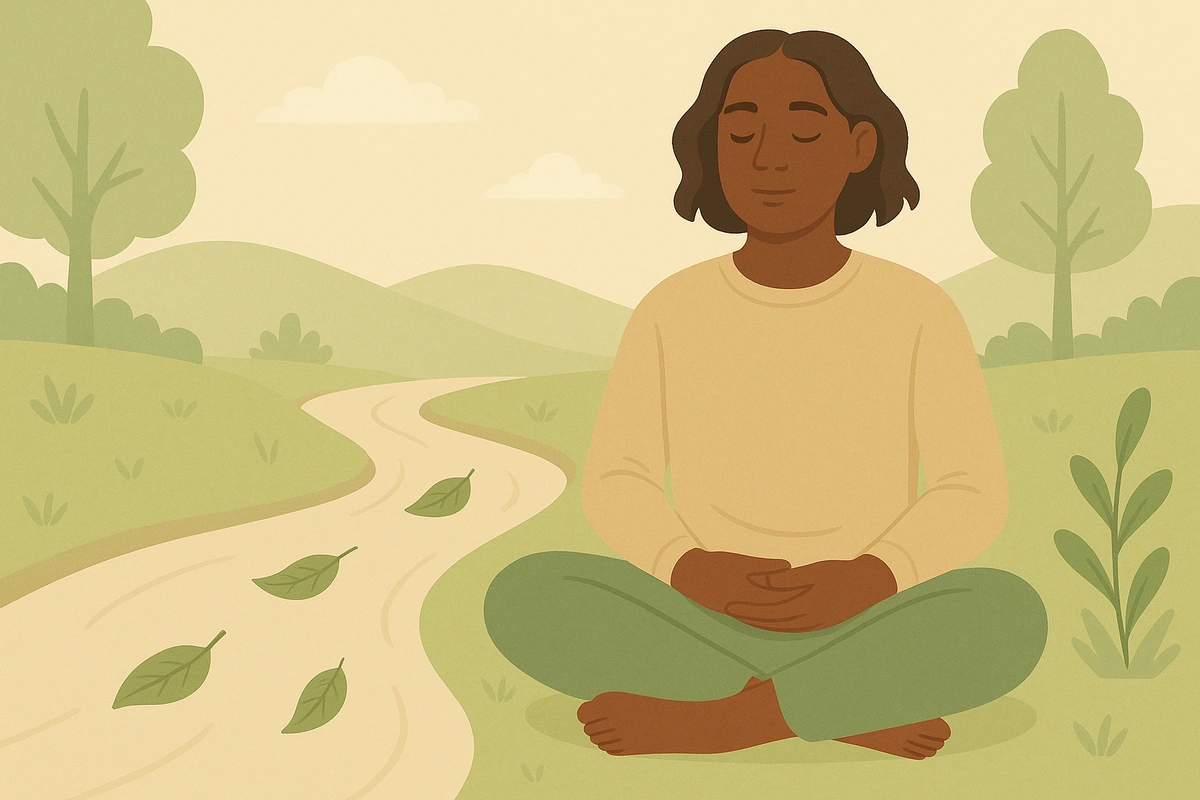Leaves on a stream visualization helps you gently detach from intrusive or distressing thoughts by imagining them floating away like leaves on flowing water. This mindfulness technique promotes cognitive defusion, reducing the emotional impact of anxious thinking while building psychological flexibility.

Leaves on a stream visualization is a mindfulness-based technique that helps you develop a healthier relationship with difficult thoughts by creating psychological distance between yourself and your mental content. This practice teaches you to observe thoughts as temporary mental events rather than absolute truths that demand immediate attention or reaction.
This technique works particularly well because it provides a concrete visual metaphor for the abstract concept of cognitive defusion - the ability to step back from thoughts rather than getting caught up in their content. By repeatedly practicing this visualization, you strengthen your capacity to recognize that thoughts naturally come and go like leaves floating downstream, reducing their power to trigger anxiety or emotional distress.
Leaves on a stream visualization engages multiple therapeutic mechanisms that promote emotional regulation and psychological well-being.
The practice teaches cognitive defusion, a core concept in acceptance and commitment therapy that involves changing your relationship with thoughts rather than trying to change the thoughts themselves. Research shows that cognitive defusion techniques significantly reduce the believability and emotional impact of negative thoughts.
Visualization activates the brain's visual cortex while simultaneously engaging areas responsible for emotional regulation. This dual activation helps calm the amygdala (the brain's alarm center) while strengthening prefrontal cortex activity associated with emotional control and rational thinking.
The stream metaphor works because it aligns with how thoughts naturally function - they arise, exist temporarily, and pass away. By practicing this observation repeatedly, you strengthen neural pathways associated with mindful awareness rather than reactive thinking patterns.
The technique promotes psychological flexibility, which research identifies as a key factor in mental health and resilience. Instead of fighting thoughts or getting overwhelmed by them, you learn to hold them lightly and respond more skillfully.
Studies demonstrate that mindfulness-based cognitive interventions, including visualization techniques, create measurable changes in brain structure and function. Regular practice strengthens the insula (body awareness) and anterior cingulate cortex (attention regulation) while reducing hyperactivity in stress-response regions.
The non-judgmental observation aspect helps break cycles of secondary suffering - the additional distress we create by judging ourselves for having difficult thoughts. This acceptance component reduces shame and self-criticism that often amplify mental health struggles.
For people with trauma histories, the practice offers a way to acknowledge difficult memories without becoming retraumatized, as the visualization creates a sense of safety and control over mental content.
"I can't visualize clearly or my mental imagery is fuzzy" - Clear, detailed visualization isn't necessary for the technique to work. Focus more on the concept of thoughts flowing away rather than perfect visual details.
"I keep getting caught up in the content of thoughts" - This is completely normal and part of learning the skill. Each time you notice you've been hooked by a thought, gently return to placing it on a leaf without self-criticism.
"Some thoughts feel too important to put on leaves" - All thoughts can go on leaves, including important ones. You're not dismissing or ignoring thoughts - you're practicing not being controlled by them.
"I feel like I'm avoiding or suppressing thoughts" - The goal isn't to eliminate thoughts but to change your relationship with them. You acknowledge each thought fully before placing it on a leaf.
"The visualization makes me feel more anxious" - Start with shorter sessions and ensure you're in a safe, comfortable environment. Consider working with a qualified instructor if anxiety persists.
"I don't notice any difference in my thought patterns" - Benefits often develop gradually. Focus on the simple practice rather than expecting immediate changes. Consistency over weeks typically produces noticeable shifts.